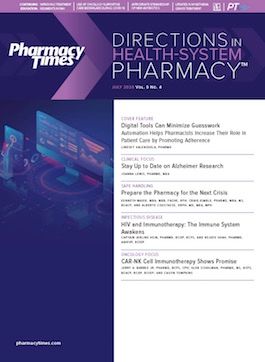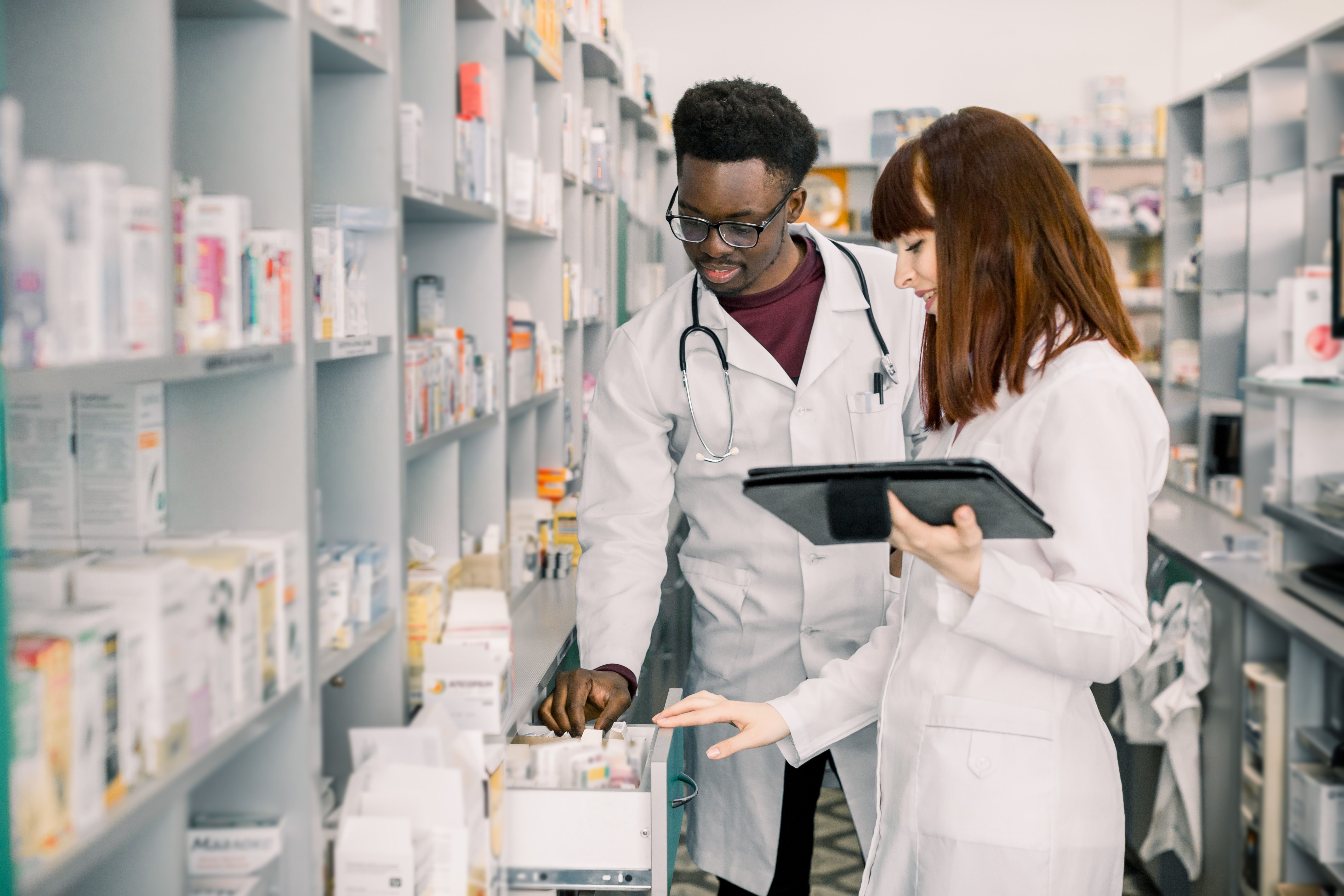Publication
Article
Pharmacy Practice in Focus: Health Systems
Digital Tools Can Minimize Guesswork
Author(s):
Automation helps pharmacists increase their role in patient care by promoting adherence.
Thank to advanced health care, pharmaceuticals, and technologyenabled providers, people are living longer than ever before.
As a result, health systems are expected to manage larger numbers of patients, many of whom live with chronic and complex conditions that may require multiple medication therapies. This situation becomes even more challenging with the additional need to manage medication adherence within the aging population.
Given these challenges, pharmacists have an opportunity to expand their traditional responsibilities to drive patient engagement with the help of digital tools.
Depending on a patient’s health plan, adherence tools differ. For example, some health plans have tools that share realtime adherence data, which helps identify patients at various points on the adherence continuum: those who are completely lost to the opportunity for adherence, those who are on the edge, and those who have the best chances of adhering to their medication schedules.
But because these adherence tools are not included with every health plan, we are often forced to rely on claims experience, which may be “aged” by the time we see them. If the health system pays its own claims, the results could be 30 days old by the time the pharmacist reaches out to patients with claims indicating a lack of medication adherence.
Fortunately, there is a new way to manage adherence that provides timely data not only regarding adherence but also the outcome measures that go along with it.
Digital medicines offer a new avenue for pharmacists to help patients achieve medication adherence in a way that was unavailable before: combining drugs with digital information. In 2012, the FDA approved ingestible event markers, tiny sensors the size of a grain of sand that enable the tracking and mapping of treatment intake times when coingested with medications. The digital medicine system also includes a mobile application, a wearable patch, and a web-based provider app.
When a patient takes a digital medicine, the wearable patch records the dose and type of medication taken and the time it was ingested. It also provides other biometric information, such as activity patterns, heart rate, rest, and step count. Patients can see all this information on their mobile devices and can enter into the app self-recorded data points, such as blood pressure, blood sugar, and weight.
With a patient’s consent, the information is automatically shared with the health care team through a secure web-based portal that is compliant with the Health Insurance Portability and Accountability Act of 1996. Providers can use the objective data shared to tailor treatment decisions and deliver more informed care.
Specialty pharmacists are crucial to the digital medicines process because these data are created by a pharmacist on initial order by the patient’s prescribing physician. Via the co-encapsulation process, a pharmacist takes an FDA-approved ingestible event marker and an FDA-approved oral medication dose and places them inside a commercially available capsule using standard capsule fill equipment in the pharmacy.
Depending on the workflow established within a clinic or health system, pharmacists may also be involved with keeping track of data produced by the digital medicines. This may mean contacting a patient’s physician or someone else on the team to intervene based on the data presented or acting on it themselves.
For example, let’s say that a patient is using digital medicine to control her hypertension. The pharmacist notices that the patient’s heart rate has been elevated over a series of days, during which she did not take her medication regularly. As a next step, the pharmacist calls the patient to discuss the data points and understand what is going on. After the conversation, the pharmacist may determine that the patient needs to be seen by her physician.
A pharmacist could also be involved with titration of that medication. For instance, in the previous example, let’s say that the pharmacist calls the patient and learns that the medication is causing her to feel dizzy when she takes it, which is leading to nonadherence. A clinical pharmacist may be able to titrate the drugs in the digital medicine and get that delivered to the patient the same day, to have her resume taking the medication and to ensure her heart rate is back under control.
In September 2018, Desert Oasis Healthcare (DOHC), the health system in Southern California where I work, implemented digital medicines into our care regimen for patients with diabetes and hypertension. Our team of 24 community pharmacists observed that digital medicines support our patient-centered and value-based care, providing information about how patients are doing day by day, allowing us to help them achieve their goals and manage their diseases without having to see them in our clinic.
We saw that the timely data not only helped with adherence but also with the outcome measures of patients who go along with it.
Since we started, we have enrolled 150 patients on digital medicines who had been identified as nonadherent. We are also on track to bring another 100 onto digital medicines by this fall, with a goal of 250 patients by the end of the year. To date, patients are demonstrating an approximately 88% adherence rate when wearing the patch. We will have more aggregated data on outcomes by early next year.
Patients at DOHC generally have been receptive to digital medicines. When we suggest to a patient that they use digital medicines, the first question they usually ask is, “Can this track my location?” The answer to that is “No, there is no GPS functionality in the ingestible sensor or the wearable patch.”
We also assure them that they really are in control of who sees the data, and we will abide by their wishes on that, as we do with all the rest of their medical records.
Patients who engage with the app get a lot out of using digital medicines. Given the data in the applications, patients now come to appointments with data they trust and believe in.
Our community pharmacy team is excited to see patients adopt digital medicines. We want patients to see the results themselves and notice that their health is improving when they take their medications on a regular basis. Appointments with us are more meaningful, as everyone is involved in their care. And the use of digital medications allows our teams to initiate, titrate, eliminate, or change medication without second guessing. With the use of digital medicines, the community pharmacy team at DOHC has been able to better allocate our time based on need and risk, shifting our practice to proactive from reactive.
Lindsey Valenzuela, PharmD, is the administrator of population health and prescription management at Desert Oasis Healthcare in Palm Springs, California.

Newsletter
Stay informed on drug updates, treatment guidelines, and pharmacy practice trends—subscribe to Pharmacy Times for weekly clinical insights.






